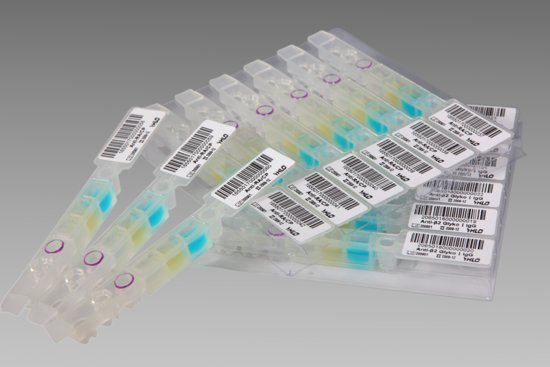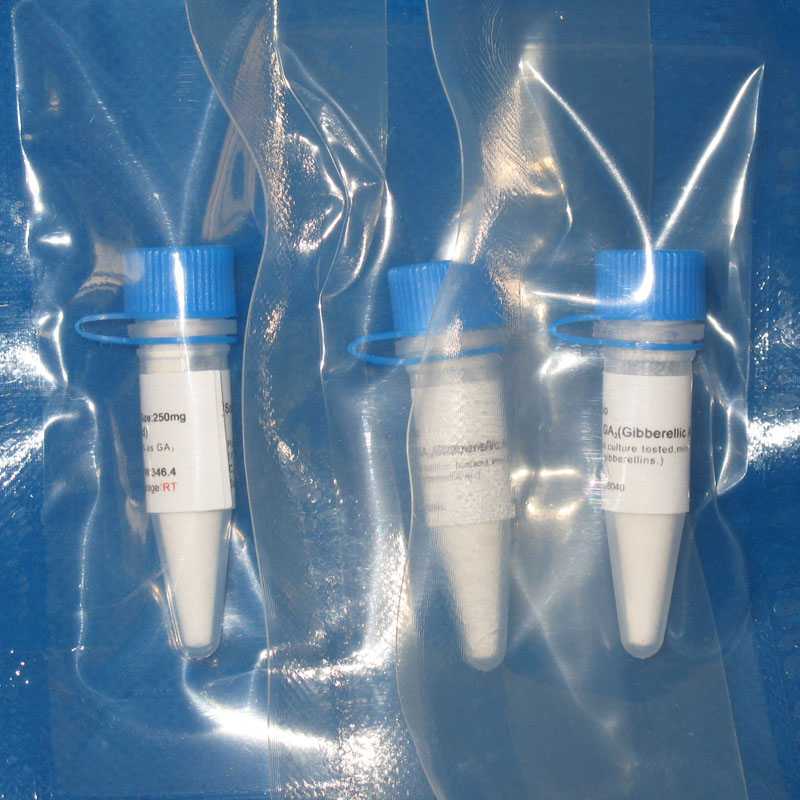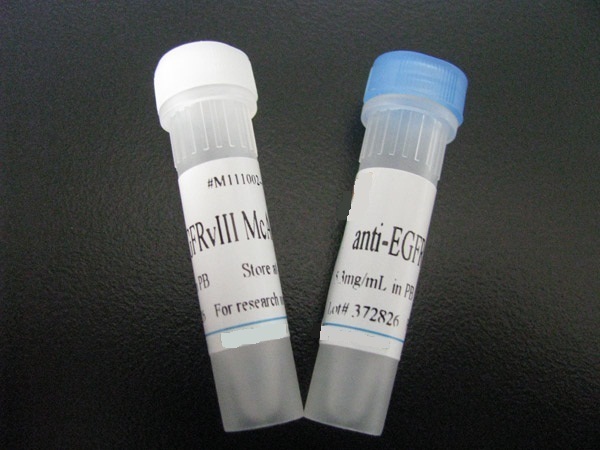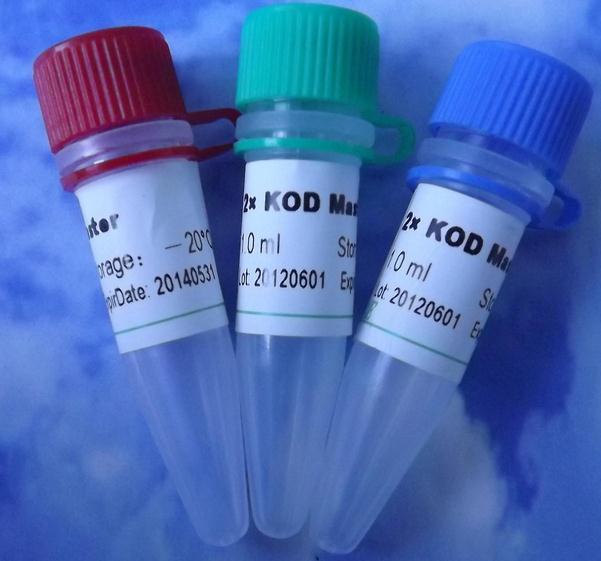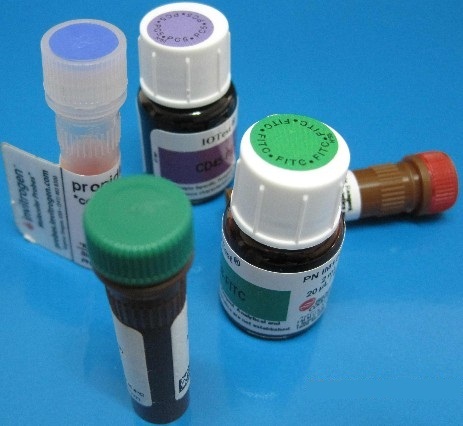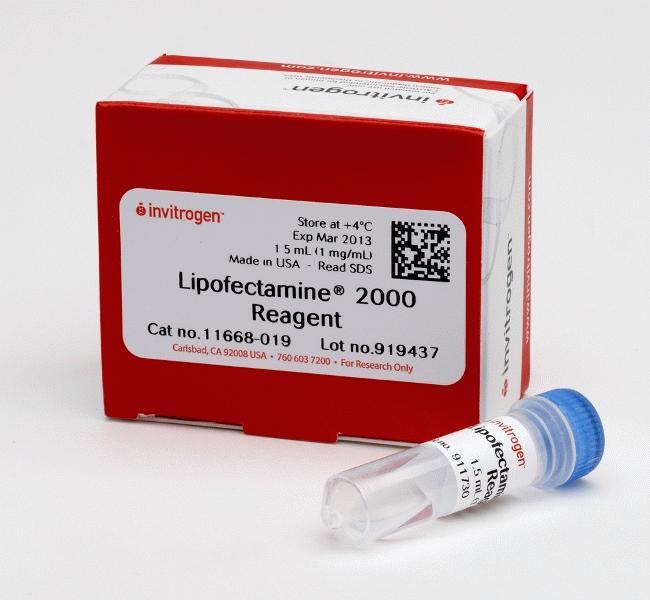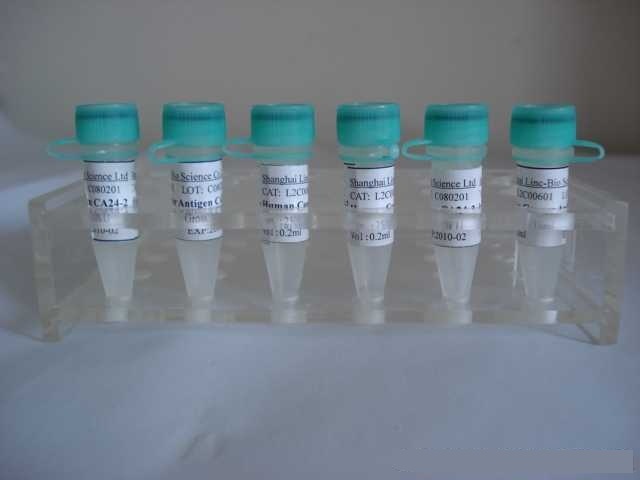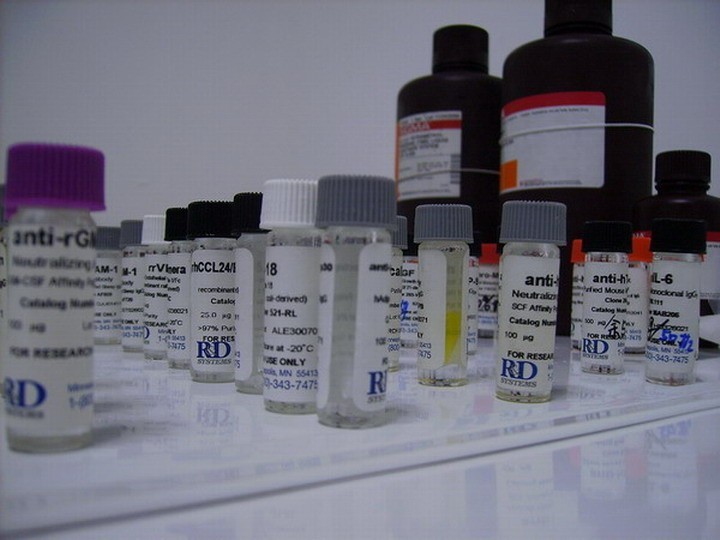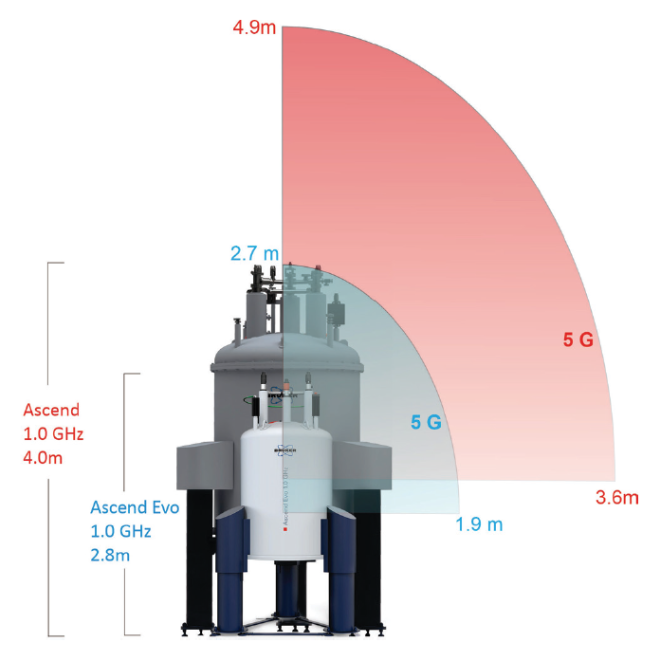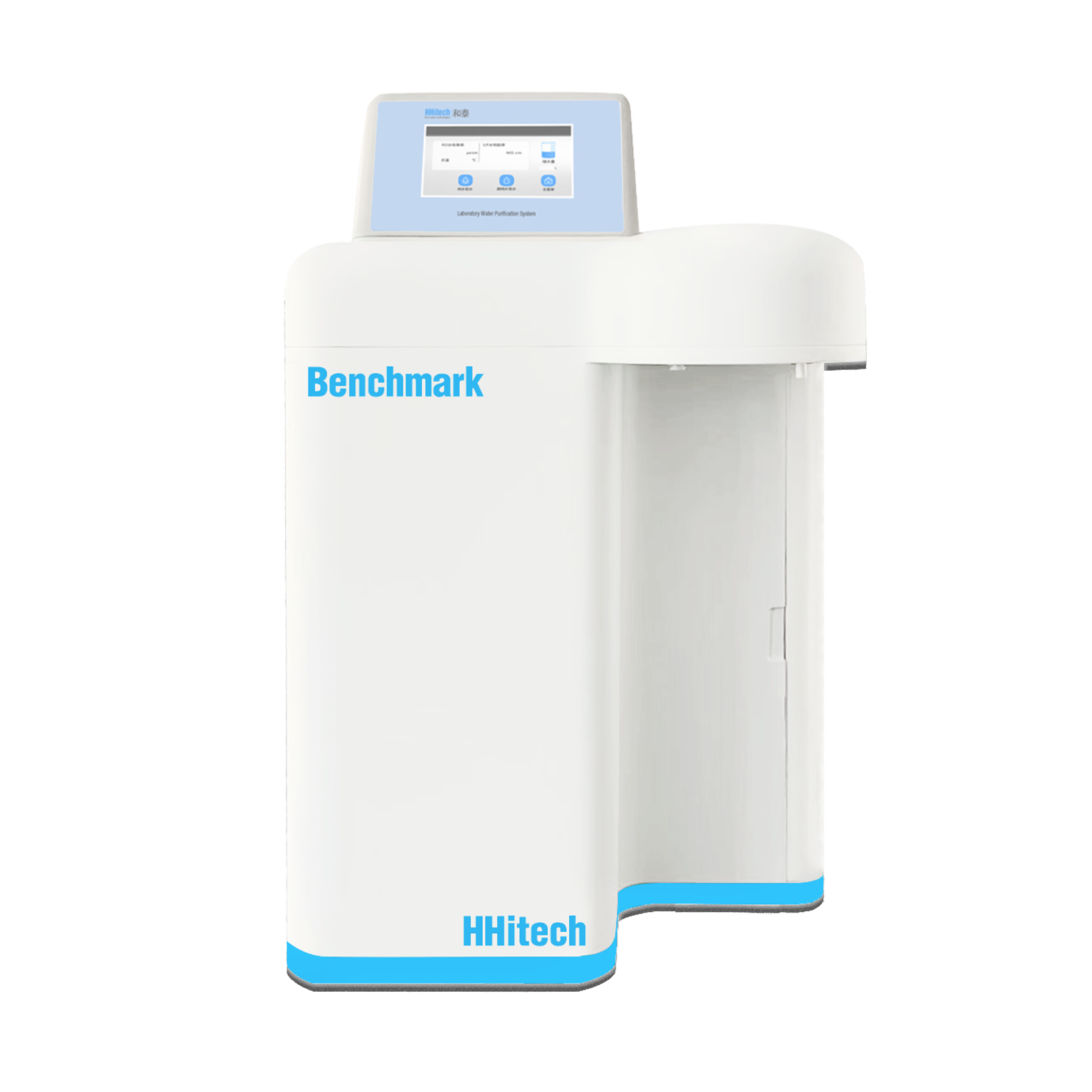G1氨基丁酸A型受体α1抗体英文名称 Anti-GABRA1/GABA A Receptor alpha 1
中文名称 G1氨基丁酸A型受体α1抗体
别 名 ECA4; EJM; EJM5; Gaba receptor alpha 1 polypeptide; GABA(A) receptor; GABA(A) receptor subunit alpha 1; GABA(A) receptor subunit alpha-1; GABA(A) receptor, alpha 1; GABRA 1; GABRA1; Gamma aminobutyric acid (GABA) A receptor alpha 1; Gamma aminobutyric acid A receptor alpha 1; Gamma aminobutyric acid receptor subunit alpha 1; Gamma-aminobutyric acid receptor subunit alpha-1; GBRA1_HUMAN.
浓 度 1mg/1ml
规 格 0.1ml/100μg 0.2ml/200μg
抗体来源 Rabbit
纯化的抗体可通过不同的途径获取,有些G1氨基丁酸A型受体α1抗体可通过下述方法制备或从商家购买。从商家购买的抗体,通常附有正确的储存方法。
1)工作液应在4℃下融化并存放,可能稳定达数月。
2)如果没有特殊原因而避免使用叠氮钠,亦可加入叠氮钠,浓度为0.02%。将纯化的抗体样本分装成合适的体积,于-20℃保存。
3)纯化的抗体溶液应以较高的浓度(如lmg/m1)在中性pH下保存。:常用的抗体储存浓度高达l0mg/ml。较低浓度的抗体冻存前应浓缩。所有标准的浓缩方法(如超滤法),皆可使用。还有一个简单的方法是用蛋白A或蛋白G亲和柱来浓缩溶液。如果纯化的抗体不是用于标记,可将它们以较低浓度储存于加有1%BSA的溶液中。
4)经纯化制备的抗体在常用的缓冲液中是稳定的。其DH应保持在中性左右。如果pH在7-8之间,即使保存多年,对抗体也无损害。多数情况下,盐浓度适于保持在0-150mmol/L之间,但在长期存放的抗体中,盐溶液浓度高达500mmol/L时,对G1氨基丁酸A型受体α1抗体能有损害。如果没有其他说明.律议用PBS或50mmol/LTris(DH8.0)溶液长期存放抗体。
克隆类型 polyclonal
交叉反应 Human, Mouse, Rat, Chicken, Dog, Cow, Horse
产品类型 一抗
研究领域 免疫学 神经生物学 信号转导 激酶和磷酸酶
蛋白分子量 predicted molecular weight: 52kDa
性 状 Lyophilized or Liquid
免 疫 原 KLH conjugated synthetic peptide derived from human GABRA1
亚 型 IgG
纯化方法 affinity purified by Protein A
储 存 液 0.01M PBS, pH 7.4 with 10 mg/ml BSA and 0.1% Sodium azide
产品应用 WB=1:100-500 ELISA=1:500-1000 IP=1:20-100 IHC-P=1:100-500 IHC-F=1:100-500 IF=1:100-500
(石蜡切片需做抗原修复)
not yet tested in other applications.
optimal dilutions/concentrations should be determined by the end user.
保存条件 Store at -20 °C for one year. Avoid repeated freeze/thaw cycles. The lyophilized antibody is stable at room temperature for at least one month and for greater than a year when kept at -20°C. When reconstituted in sterile pH 7.4 0.01M PBS or diluent of antibody the antibody is stable for at least two weeks at 2-4 °C.
Important Note This product as supplied is intended for research use only, not for use in human, therapeutic or diagnostic applications.
G1氨基丁酸A型受体α1抗体产品介绍 This gene encodes a gamma-aminobutyric acid (GABA) receptor. GABA is the major inhibitory neurotransmitter in the mammalian brain where it acts at GABA-A receptors, which are ligand-gated chloride channels. Chloride conductance of these channels can be modulated by agents such as benzodiazepines that bind to the GABA-A receptor. GABA-A receptors are pentameric, consisting of proteins from several subunit classes: alpha, beta, gamma, delta and rho. Mutations in this gene cause juvenile myoclonic epilepsy and childhood absence epilepsy type 4. Multiple transcript variants encoding the same protein have been identified for this gene. [provided by RefSeq].
Function : Receptor for GABA. The activity of this receptor is mediated by G-proteins that inhibit adenylyl cyclase activity, stimulates phospholipase A2, activates potassium channels, inactivates voltage-dependent calcium-channels and modulates inositol phospholipids hydrolysis. Plays a critical role in the fine-tuning of inhibitory synaptic transmission. Pre-synaptic GABA-B-R inhibit neurotransmitter release by down-regulating high-voltage activated calcium channels, whereas postsynaptic GABA-B-R decrease neuronal excitability by activating a prominent inwardly rectifying potassium (Kir) conductance that underlies the late inhibitory postsynaptic potentials. Not only implicated in synaptic inhibition but also in hippocampal long-term potentiation, slow wave sleep, muscle relaxation and antinociception. Activated by (-)-baclofen, cgp27492 and blocked by phaclofen.
Subcellular Location : Secreted and Cell membrane.
Tissue Specificity : Highly expressed in brain and weakly in heart, small intestine and uterus. Isoform 1A is mostly expressed in granular cell and molecular layer. Isoform 1B is mostly expressed in Purkinje cells. Isoform 1E is predominantly expressed in peripheral tissues as kidney, lung, trachea, colon, small intestine, stomach, bone marrow, thymus and mammary gland.
Similarity : Belongs to the G-protein coupled receptor 3 family. GABA-B receptor subfamily.
Contains 2 Sushi (CCP/SCR) domains.
GABA是中枢神经系统主要的抑制性神经递质,而GABA-ARα1是GABA的受体之一,在脑内分布最普遍,α1亚单位与其功能密切相关。通过位于脑内的GABA受体发挥抑制性作用GABA及GABA-ARα1在癫痫、颅脑损伤、神经毒剂中毒等疾病、损伤和中毒模型中的表达、结合都有改变。
![]()



